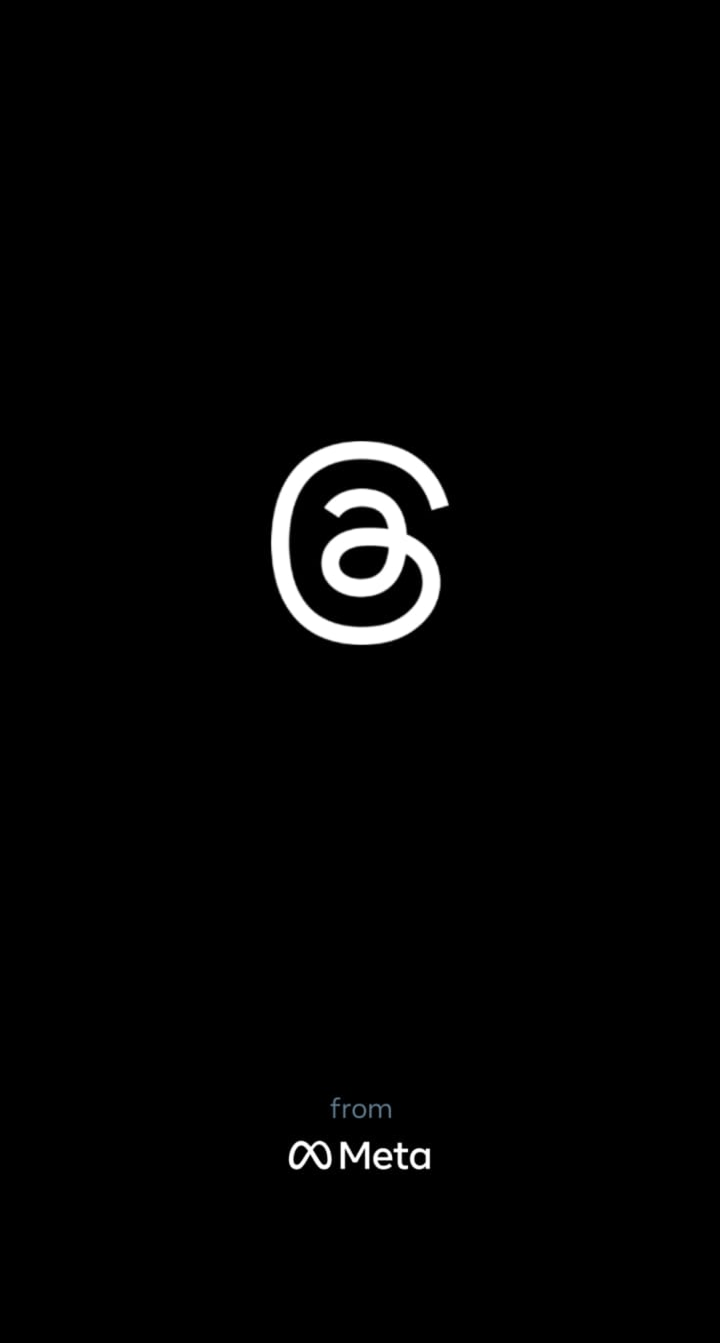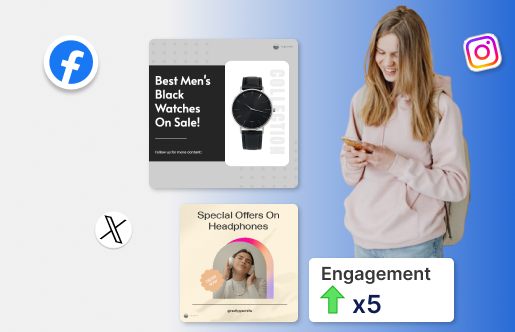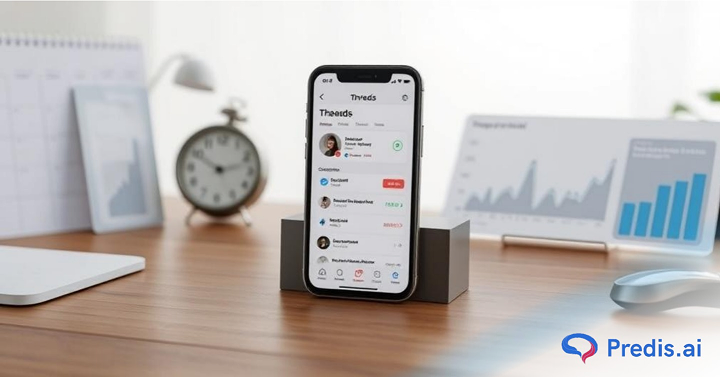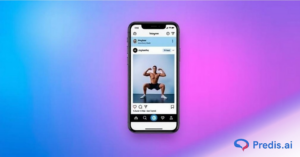Threads by Meta is no longer just a competitor to Twitter; it’s now a thriving microblogging site where creators, brands, and regular people can meet in real time. Content is still king, but when you post it is very important for how far it goes. Threads move quickly compared to Instagram or Facebook. A post’s life span is often measured in minutes instead of hours. You’ll miss out on likes, comments, reposts, and reach if your post goes live when your audience isn’t online. This guide will show you the best times to post on Threads in 2025 based on data trends, how users act, and how well niches do. This complete guide will help you master timing on Threads, whether you’re a brand, a maker, or a marketer who wants to get more people to interact with your content.
Why Posting Time Matters on Threads?
Threads are meant for instant access. Real-time feeds show content; user interaction usually peaks in the first few minutes of a post becoming live. The system prioritizes posts that catch on fast, hence visibility depends totally on the first thirty to sixty minutes.
Your post can easily get buried under a tsunami of fresh material when you publish during off-peak hours. Posting, on the other hand, raises your chances of being seen, interacted with, and shared when your intended audience is actively scrolling.
Good timing on Threads is essentially about being relevant in an app designed for discovery and conversation, not only about reach. Hence, it gets very essential to make oneself aware of the best time to post on Threads, to always stay relevant!
Threads User Behavior: Active Hours in 2025
Understanding the activity patterns of your audience will assist you decide when to publish. Updated social media usage stats from early 2025 show that Threads users:
- Morning scrolls (8 AM to 11 AM): especially working professionals, usually check in before starting their day and are most active during morning scrolling (8 a.m. to 11 a.m.).
- Lunch breaks (12 PM to 2 PM): are popular times for casual browsing and discussion.
- Evening sessions (7 PM to 9 PM): users relax and are more likely to comment or share postings.
Fascinatingly, Threads interact quite differently on weekdays than on weekends. They show slightly higher engagement rates during weekdays, just like LinkedIn and Twitter. Niches like entertainment, fitness, or lifestyle, however, generally peak on weekends or off- hours.

Best Time to Post on Threads by Day of the Week
Each day of the week brings different engagement patterns. For a detailed understanding check out “How to create social media posting schedule and content plan” blog by Predis AI!
Here’s a day-by-day breakdown of the most effective time slots:
Monday: 10 AM – 12 PM
People are catching up on news, industry updates, and productivity hacks. A great time for thought leadership and industry-specific content.
Tuesday: 9 AM – 11 AM
Engagement rates spike early. Ideal for announcements, community-building posts, or updates.
Wednesday: 11 AM – 1 PM
Users are more settled into their week. Midday posts tend to perform well, especially those that ask questions or spark discussions.
Thursday: 10 AM – 12 PM
This is often the second-best day for engagement. Threads posted mid-morning to noon get good visibility before the pre-weekend slowdown.
Friday: 12 PM – 2 PM
Best for lighter content, wrap-ups, or promotions. People are winding down and tend to engage with casual or entertaining posts.
Saturday: 9 AM – 11 AM
While traffic drops slightly, early risers and niche communities are still active. Great for community-driven content or lifestyle topics.
Sunday: 7 PM – 9 PM
Engagement bounces back on Sunday evening. This is the perfect slot for prepping your audience for the week ahead.
Best Time to Post on Threads by Niche
Timing varies significantly based on your industry. Here’s how different niches perform on Threads:
Creators and Influencers
- Peak times: 10 AM – 12 PM and 7 PM – 9 PM
- Audience engagement is high when people are on breaks or relaxing.
- Posting during late evenings with a compelling hook can spark meaningful replies and shares.
Ecommerce and Retail Brands
- Peak times: 12 PM – 2 PM (midweek)
- Promotions and product reveals tend to perform well during lunch hours when people are casually scrolling.
- Weekend mornings are also effective for sales and discount posts.
Health and Wellness Experts
- Peak times: 6 AM – 9 AM and 5 PM – 7 PM
- This audience is typically active during morning routines or winding down after work.
- Inspirational posts, tips, and short-form advice do well.
Personal Development Coaches
- Peak times: 7 AM – 9 AM and 8 PM – 9:30 PM
- Motivational posts, reflection prompts, and productivity content perform best when users are setting intentions or reflecting at the end of the day.
News and Media Pages
- Peak times: 8 AM – 10 AM and 6 PM – 8 PM
- Real-time updates thrive when users are actively seeking information.
- Early mornings and early evenings are key slots.
SaaS and Startups
- Peak times: 9 AM – 11 AM on weekdays
- Posts about product updates, feature launches, or founder insights perform well during traditional working hours.
Threads Insights: Tools to Analyze Best Posting Times
To make your timing strategy more data-driven, consider using the following tools:
- Meta’s Native Threads Analytics (if rolled out this year): Gives you direct insights into post engagement, reach, and interaction timeframes.
- Buffer or Predis AI: Use their cross-platform data to schedule and compare performance across time slots.
- Metricool or SocialBee: Offers Threads scheduling along with best-time-to-post predictions based on engagement history.
These tools help you identify patterns over time, allowing you to fine-tune your posting schedule based on real data rather than guesswork.
Time Zone Matters: Scheduling for a Global Audience
If your audience spans across time zones, you can’t afford to rely on a single post timing. Here’s how to maximize visibility:
1. Use Instagram Threads Insights
Check where your followers are located. If you have 40% U.S. and 30% India-based followers, you’ll want to schedule posts for both EST and IST prime times.
2. Staggered Posting
For global brands, consider posting the same (or slightly modified) content at two different times — one optimized for North America (9 AM EST) and one for Asia-Pacific (9 AM IST).
3. Leverage Scheduling Tools
Use tools like Buffer, Predis AI, Pallyy, or Later to schedule Threads posts at optimal times for different regions without manual effort.
4. Time Conversion Tip
Use tools like World Time Buddy to cross-check peak hours in multiple time zones before scheduling.
Bonus Tip: If you’re posting something timely (like product launches), align the post with the timezone of your primary audience — not yours.
Case Studies: Real-World Threads Posts That Worked
To put theory into practice, let’s look at how brands are getting the timing of their posts on Threads just right:
Glossier: Do Not Change and Morning Posts
- Glossier posts every day between 9 AM and 10 AM EST. The site is known for its beauty and health posts.
- User-generated material or simple product shots are common in these posts.
- Because they post early in the morning, it fits with the morning routines of their main audience, so there is a lot of contact in the first hour.
- Takeaway: Time your posts so they fit in with the habits and lifestyles of your readers.
Duolingo: Funny Lunchtime Phrases
- Around 12–1 PM EST, Duolingo posts funny language jokes and cultural quips during its users’ lunch scroll time.
- As a result, engagement goes through the roof because people are looking during breaks.
- In order to stay in people’s minds, post fun or casual material during breaks.
Notion: Things to Think About This Weekend
- Notion posts productive, reflective Threads around 10 a.m. on the weekends, when people are making plans for the week or getting their thoughts in order.
- As a result, a lot of people share and bookmark their weekend material.
- Takeaway: Post useful information on the weekends to get people to stay on your site longer.
Pro Tips to Maximize Engagement (Even Outside Peak Hours)
- Test and analyze different time slots over a 2-week period to find your own audience’s sweet spot.
- Use hooks in the first line to grab attention instantly—even if users are casually scrolling.
- Encourage replies by ending posts with a question or opinion that invites conversation.
- Engage within the first 15 minutes after posting. Reply to comments and repost replies to boost visibility.
Posting at the right time is only one part of the equation. The content and how quickly you engage back also play a big role.
How to Build a Content Calendar for Threads?
Creating a simple but effective content calendar for Threads ensures you stay consistent without posting at random. Here’s what to include:
- Weekly Time Blocks: Schedule posts around peak engagement slots for each day.
- Content Themes: Assign daily themes like Motivation Monday, Thought Leadership Thursday, or Product Feature Friday.
- Tools to Use: Notion, Trello, or Google Sheets are great for planning. Pair them with scheduling tools for execution.
By staying organized, you can plan posts in advance and schedule them for optimal visibility, reducing last-minute scrambling.

Common Mistakes to Avoid While Posting on Threads
- Posting without analyzing past performance: Always review what time slots delivered the best results and replicate them.
- Overposting during low-activity hours: This dilutes your visibility and can reduce reach.
- Ignoring time zones: If your audience spans regions, stagger posts accordingly.
- Forgetting to engage post-publish: Threads favors conversations, not one-sided updates.
Avoiding these mistakes helps ensure your content not only gets seen, but actually drives engagement.
Conclusion
Timing your posts on Threads can significantly impact how far your message travels. From audience behavior and niche-specific timing to experimenting with tools and content calendars, every small tweak can compound your growth.
In 2025, it’s no longer just about being present, it’s about being present at the right time. Test, analyze, and adapt your schedule to find what works best for your audience. The right time to post could be the difference between getting ignored and going viral.
















